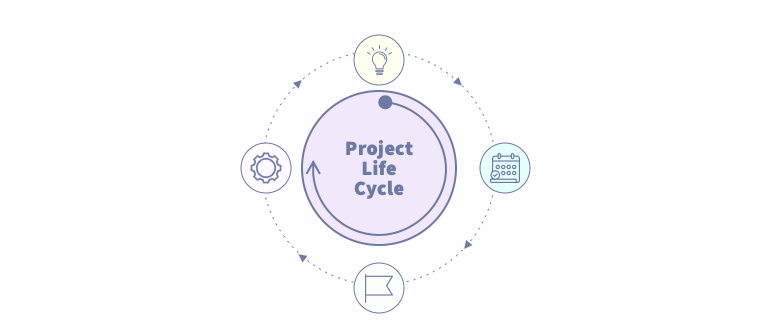What exactly is the Project Lifecycle? - Course Monster Blog

A project is a short-term endeavor established to manage the effort required to attain a certain goal.
Projects differ from ordinary day-to-day chores in that they are intrinsically riskier than stable, business-as-usual operations, and they frequently benefit from a specialized approach to managing the labor involved.
A project normally has a life cycle that begins at the beginning and ends at the end. The focus of work shifts as the project progresses: from the initial stage of examining the causes and need for the investment, to a more detailed definition and planning of the work necessary, to delivering the outputs and eventually concluding the project.
The project lifecycle is a method of seeing a project from start to finish. Breaking down a project into phases allows project managers and others to focus on what is vital at any given time. For example, at the beginning of its life, the project focuses on ensuring that the investment idea is sound, aligns with the overall strategy, and is worth further investigation. As it progresses to the more thorough conceptualization and planning, the emphasis shifts to ensuring that the project is based on solid foundations and has clear and effective governance and controls in place. As the project’s products are delivered, it’s critical to ensure that the right outputs are produced to the right quality, that progress is maintained, and that risks and difficulties are managed. And at the end of the project, the emphasis is on tying up loose ends, ensuring that the items generated have been turned over to operational regions, and reflecting on lessons learned for future projects.
Types of Project Lifecycle
Linear lifecycle
A linear project lifecycle (also known as a “waterfall” strategy) defines and specifies the scope and requirements early in the project and delivers products in a series of subsequent phases. Because scope and quality are usually defined early in the project, time and cost are usually flexible to meet the requirements within those limits.
Iterative lifecycle
An iterative lifecycle (often known as an ‘agile’ method) specifies and fixes the project’s duration and cost. Products are delivered iteratively, with scope and quality flexible to meet schedule and cost limitations.
Hybrid approach
A hybrid lifecycle incorporates characteristics of both linear and iterative processes. Some project phases (for example, product design) may benefit from an incremental approach, particularly in the early stages of the project, whereas others (for example, product delivery) may benefit from a sequential linear strategy.
The Praxis Framework lifecycle
Praxis is a free, community-driven project, program, and portfolio management system. Praxis is built around a project lifecycle that can be customized for use with many sorts of projects, whether they are basic or complicated, managed as standalone initiatives or as part of a larger program. To assist introduce the Praxis lifecycle, let’s pretend we’re starting a basic project where each stage comes after the one before it.
Identification phase
The goal of this phase is to investigate an original idea, develop it into a high-level sketch of a project, and determine whether the early concept is likely to be realistic and hence worth further investigation. Each project is started with a mandate – the initial idea – and the identification phase takes this and created a legal high-level justification for the project, termed a brief. This phase also outlines the work required to complete the more extensive planning and investigative activities required in the following phase, which is specified in the definition plan.
The brief and definition plan are used together to determine whether or not to move to the next phase of the lifecycle, where the work required to fulfill the project is described in greater detail. There is a gate at the end of this phase where it is decided whether or not the project shall go to the next stage.
Definition phase
This phase is concerned with laying a solid foundation for the project. It seeks to create a more thorough image of what the project needs to generate, the work necessary for delivery, and how the project should be managed in order to decide whether or not it should go to delivery.
This is where the scope of the project is defined and the work planned, scheduled, cost, and rationale for the project (comparing the costs, benefits, and risks involved) documented in a business case. At the end of this phase comes another decision point where the required documentation is utilized as a foundation to authorize the delivery of the project.
Delivery phase
This is the stage at which plans are carried out and items are delivered. This includes authorizing work and accepting completed goods, tracking progress against goals and taking corrective action if necessary to stay on schedule, reporting and communicating with stakeholders, and resolving or escalating issues as they emerge.
Closure
It is critical to close things down in a disciplined manner at the end of the project and ensure that any loose ends are tidied up. This phase entails ensuring that all products have been handed over and accepted by the relevant operational areas, that any outstanding items have been assigned home for later resolution, and that the project has been reviewed for lessons and improvements that can be passed on to help future projects, and that any resources, such as people or equipment, have been discharged.
Here at CourseMonster, we know how hard it may be to find the right time and funds for training. We provide effective training programs that enable you to select the training option that best meets the demands of your company.
For more information, please get in touch with one of our course advisers today or contact us at training@coursemonster.com




Comments ()